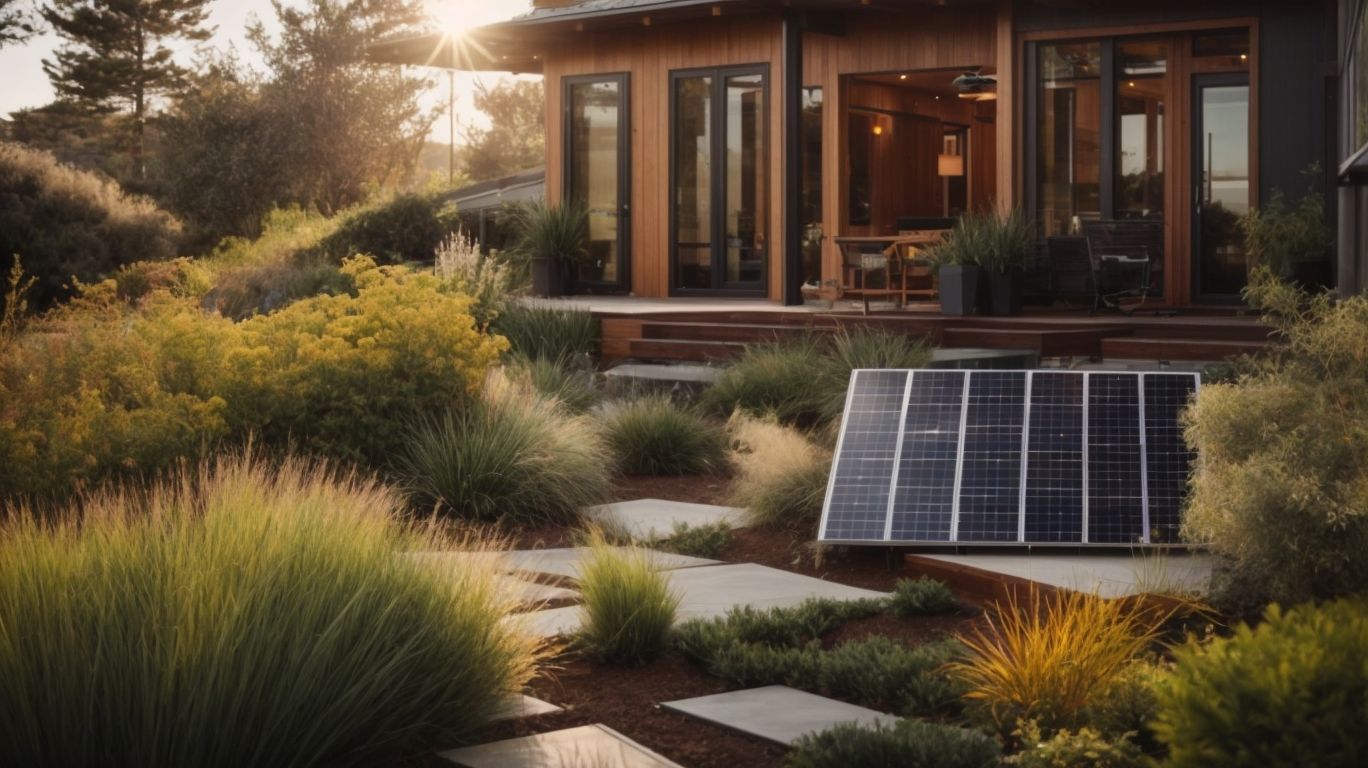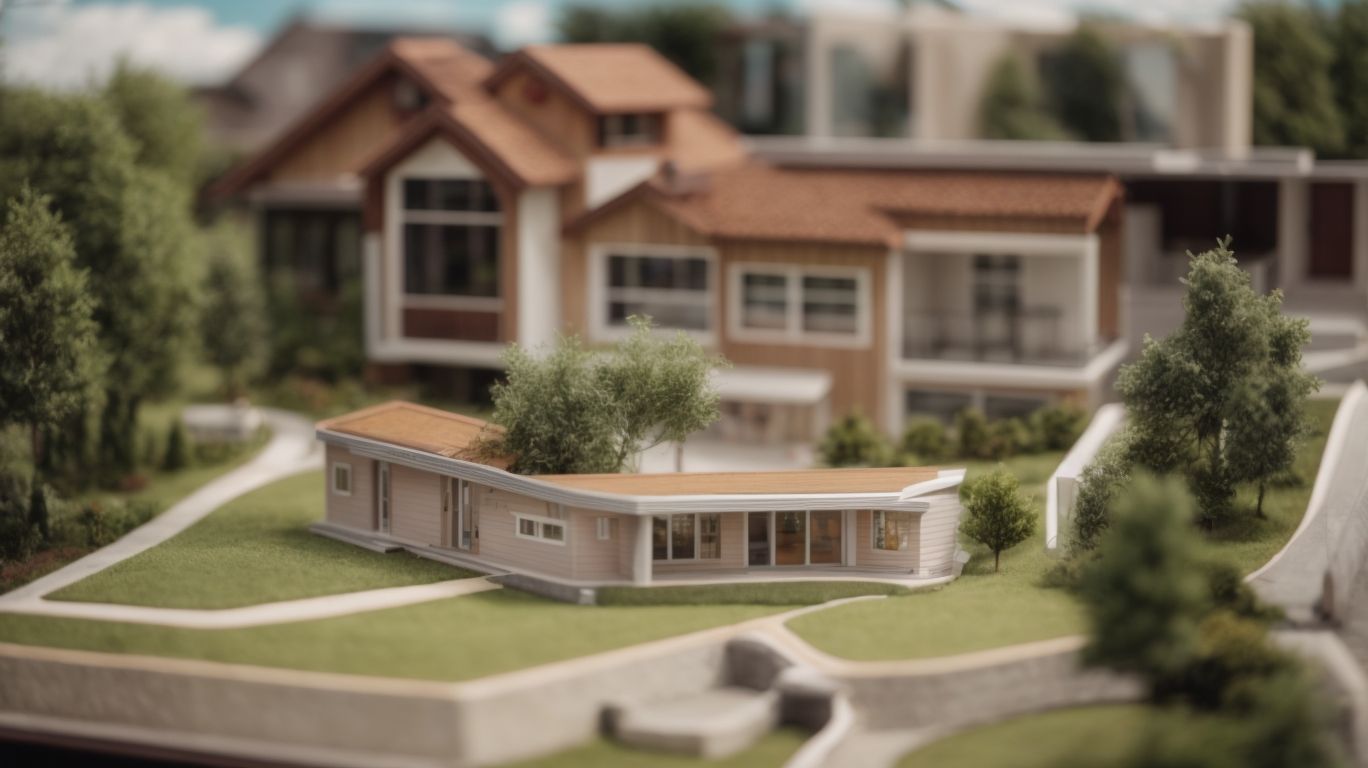
From Bamboo to Hempcrete: Innovative Materials Shaping Bay Area Sustainable Housing
As the demand for sustainable housing continues to rise, innovative materials like bamboo and hempcrete are reshaping the construction industry in the Bay Area.
We will explore the uses and benefits of these eco-friendly materials, as well as other cutting-edge options such as recycled plastic bricks, mycelium insulation, and rammed earth.
Discussion on the challenges and limitations of using these materials and how they can contribute to a more sustainable future is also included.
Join us as we dive into the future of sustainable housing in the Bay Area.
What is Bamboo?
Bamboo, a versatile and sustainable material, plays a crucial role in the construction of eco-friendly and innovative sustainable housing projects. It is a natural resource that offers a wide range of benefits in the field of construction.
Its remarkable characteristics include strength comparable to steel, flexibility that allows for unique design possibilities, and natural resistance to pests.
In the realm of sustainability, bamboo stands out for its rapid growth rate, making it a highly renewable resource. When used in green building practices, bamboo contributes to reducing carbon footprint and minimizing environmental impact.
Its applications in construction range from structural elements like beams and columns to finishing touches such as flooring, wall panels, and furniture, emphasizing its versatility within the construction industry.
How is Bamboo Used in Sustainable Housing?
The use of bamboo in sustainable housing extends to various applications such as structural elements, flooring, and even decorative finishes. It is a popular choice for insulation and architectural detailing due to its eco-friendly properties and versatility.
Not only does bamboo offer excellent insulation qualities, but it also plays a significant role in enhancing the overall architectural design of sustainable homes. Its flexibility allows for creative and innovative construction methods, leading to unique and aesthetically pleasing structures. Bamboo serves as a key component in integrating green technologies within housing projects, acting as a sustainable alternative to traditional building materials. Its rapid growth makes it a renewable resource, aligning perfectly with the principles of eco-friendly construction practices.
What are the Benefits of Using Bamboo in Construction?
The benefits of using bamboo in construction are manifold, ranging from its environmentally friendly nature to its energy-efficient properties. Bamboo contributes to sustainable design practices and enhances the overall eco-friendliness of a building project.
Bamboo is a rapidly renewable resource, with some species growing up to 3 feet in a single day, making it an ideal material for sustainable living. Its lightweight yet durable composition not only reduces construction costs but also minimizes energy consumption, contributing to the creation of energy-efficient homes. Bamboo’s natural resiliency makes it a suitable choice for withstanding various weather conditions, adding to the longevity and durability of the structure. By incorporating bamboo into construction projects, builders can significantly reduce their carbon footprint and promote environmentally friendly construction practices.
What is Hempcrete?
Hempcrete, an innovative building material derived from hemp fibers and lime, offers a sustainable alternative for construction projects in the realm of eco-friendly and natural building solutions. It presents a renewable and versatile option for sustainable housing development.
Hempcrete is gaining recognition for its environmentally friendly properties and its ability to contribute to green innovation in the construction industry. Composed of natural materials that are abundant and easily renewable, such as hemp stalks and lime, hempcrete embodies the essence of sustainable living.
Its insulation properties regulate temperature and humidity, reducing the need for additional heating and cooling systems in buildings. This not only enhances energy efficiency but also reduces carbon emissions, making it a compelling choice for eco-conscious builders and architects looking to create environmentally sustainable structures.
How is Hempcrete Used in Sustainable Housing?
Hempcrete finds extensive use in sustainable housing projects as a versatile material for insulation, wall construction, and overall building design. Its eco-friendly composition aligns with sustainable design principles, making it a sought-after choice in green construction.
The unique properties of hempcrete as a sustainable material stem from its excellent insulation capabilities, helping to regulate indoor temperatures efficiently and reduce energy consumption. By utilizing hempcrete in eco-housing initiatives, builders can achieve a harmonious balance between structural integrity and environmental responsibility. The carbon-negative nature of hempcrete makes it a standout choice in green building practices, contributing to lower carbon footprints and overall sustainability goals within the construction industry.
What are the Benefits of Using Hempcrete in Construction?
The benefits of using hempcrete in construction are significant, encompassing sustainable development goals, green building practices, and energy-efficient solutions. Hempcrete contributes to reducing carbon footprints and promoting environmentally conscious construction practices.
One of the key advantages of incorporating hempcrete into construction projects is its ability to sequester carbon dioxide, making it a highly sustainable building material. Hempcrete also offers exceptional thermal insulation, reducing the need for artificial heating and cooling systems and subsequently lowering energy consumption. By using hempcrete, builders not only contribute to a healthier environment but also benefit from cost savings in the long run due to its durability and energy efficiency.
What Other Innovative Materials are Being Used in Sustainable Housing in the Bay Area?
Apart from bamboo and hempcrete, the Bay Area is witnessing the adoption of various other innovative materials in sustainable housing projects. These alternative building materials are revolutionizing sustainable development practices in the region.
For instance, mushroom-based insulation, a bio-degradable material made from the root structure of mushrooms, is gaining traction for its sustainable attributes and thermal performance. Recycled plastic bricks, produced by utilizing discarded plastic waste, are not only reducing landfill burdens but also promoting a circular economy model. Green roofs composed of vegetation provide natural insulation, reduce urban heat island effects, and enhance biodiversity in urban environments, aligning with the city’s green initiatives.
Recycled Plastic Bricks
Recycled plastic bricks are gaining popularity in sustainable housing projects due to their low environmental impact and contribution to the circular economy. These bricks offer a sustainable solution for reducing plastic waste and promoting eco-conscious building practices.
By utilizing recycled plastic in brick production, these innovative building materials help divert plastic waste from landfills and waterways, addressing the pressing issue of plastic pollution.
Their application is versatile, as they can be used in various construction projects, including residential homes, schools, and commercial buildings.
Sustainable building techniques such as zero waste and green building practices are further promoted through the integration of these bricks, aligning with the growing emphasis on environmentally friendly construction methods in the industry.”
Mycelium Insulation
Mycelium insulation has emerged as a sustainable option for enhancing energy conservation in sustainable housing projects. This innovative material, derived from fungi, offers green construction solutions that align with energy-efficient practices in building design.
Its unique properties provide effective thermal insulation, reducing heating and cooling costs in homes. Sustainable building systems benefit greatly from mycelium insulation due to its minimal environmental impact and biodegradability, making it a key component of green infrastructure.
The installation of mycelium insulation is relatively simple, involving the mixing of mycelium with organic waste materials to create panels or blocks that can be easily fitted into walls. This sustainable material not only reduces energy consumption but also helps in improving indoor air quality, creating healthier living spaces in energy-efficient homes.
Rammed Earth
Rammed earth construction offers a biodegradable and sustainable approach to building homes in eco-conscious communities. This traditional technique utilizes compacted earth to create durable and eco-friendly structures that promote sustainable living practices.
By harnessing the natural strength and thermal mass of the earth, these sustainable housing solutions can provide energy efficiency and excellent insulation, reducing the need for excessive heating or cooling. Green building design principles are seamlessly integrated into the construction process, ensuring minimal environmental impact and resource utilization. Rammed earth construction not only caters to the aesthetic appeal of eco-housing development but also prioritizes sustainable resource management by utilizing locally sourced materials, which further reduces carbon footprint and supports the local economy.
Straw Bale
Straw bale construction presents a sustainable solution for reducing carbon footprints and promoting eco-friendly building practices in the realm of sustainable housing. These natural, renewable materials contribute to sustainable construction methods and energy-efficient homes.
The application of straw bale construction in sustainable housing projects goes beyond its environmental benefits. By incorporating green building technology and sustainable building techniques, straw bale construction stands out as a prime example of carbon-neutral construction.
The unique insulation properties of straw bales help in maintaining a consistent indoor temperature, reducing the need for additional heating or cooling systems. The construction techniques involved in straw bale building are relatively simple, making it an accessible option for eco-conscious individuals looking to reduce their environmental impact through sustainable living spaces.
Earthship
Earthships embody sustainable housing solutions that address climate change challenges and promote sustainable urban development practices. These innovative structures utilize recycled materials and renewable resources to create self-sufficient and environmentally conscious living spaces.
Implementing passive solar design techniques, Earthships optimize natural light and heat, reducing the need for artificial heating and cooling systems. Their use of thermal mass helps regulate indoor temperatures, enhancing energy efficiency. By incorporating rainwater harvesting and on-site wastewater treatment, Earthships demonstrate a closed-loop water system, reducing reliance on municipal resources. The integration of green energy sources like solar panels and wind turbines further enhances their sustainability profile, making them ideal models for eco-friendly construction and sustainable living practices.
What are the Challenges and Limitations of Using These Materials?
While innovative materials offer numerous benefits, their utilization in sustainable housing projects also poses certain challenges and limitations. Understanding and addressing these issues is essential for ensuring the effective implementation of sustainable practices.
Key challenges faced when using innovative materials in sustainable housing include cost implications, as these materials often come at a higher price point initially. This can deter some builders and developers from incorporating them into their projects, especially when working within tight budgets.
Scalability can be an issue, as not all innovative materials are readily available in large quantities or may have limited production capacity. Regulatory constraints also play a significant role, with building codes and standards sometimes lagging behind the rapid advancements in sustainable building technologies.
To overcome these challenges, a multi-faceted approach is needed, including research and development to drive down costs, industry partnerships to improve scalability, and advocacy for updated regulations that incentivize the use of green construction materials.
How Can These Materials Contribute to a More Sustainable Future?
The adoption of innovative materials in sustainable housing projects paves the way for a more sustainable future characterized by green building practices and environmentally conscious design. These materials play a vital role in advancing sustainable development and reducing the carbon footprint of construction projects.
They are essential components that enhance energy efficiency and overall performance in buildings, contributing to reduced energy consumption and operational costs over time.
By incorporating sustainable materials like bamboo, recycled glass, or reclaimed wood, architects and designers embrace eco-friendly alternatives that lessen the environmental impact of construction.
These materials often have better thermal properties, allowing for improved insulation and regulation of indoor temperatures, thus decreasing the reliance on artificial heating and cooling systems.
Their integration fosters a shift towards more sustainable building practices and green infrastructure, aligning with global sustainability goals.




No Comments